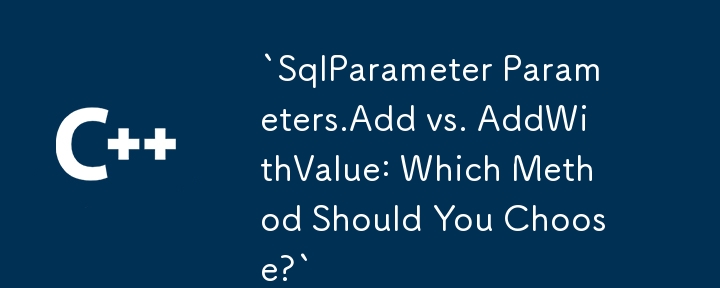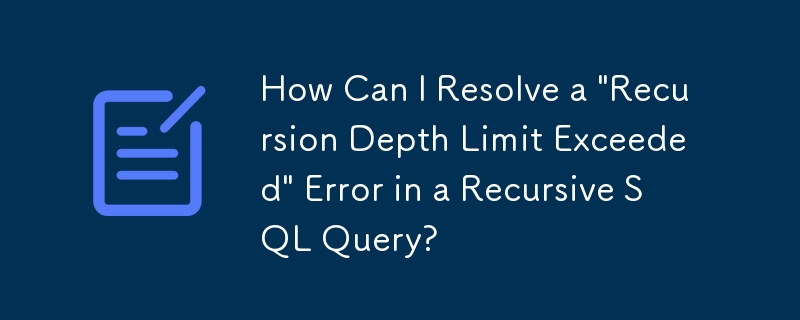Found a total of 10000 related content

Implementing Custom Validators for HTML Forms
Article Introduction:When HTML built-in verification is not enough, a custom validator can implement more complex form validation through JavaScript. First, listen to the form's submit event and prevent the default submission behavior from being executed to execute custom logic; second, error message elements can be inserted and styled when verification fails to improve user experience; finally, custom verification can be incorporated into the browser's native verification process using ConstraintValidation APIs such as setCustomValidity() and checkValidity() to achieve more granular control.
2025-07-26
comment 0
464

Handling Form Submissions in HTML
Article Introduction:The key points of handling HTML form submission are: 1. Use form tags and correctly set the action and method attributes; 2. Select the GET or POST submission method according to the purpose; 3. Ensure that the form field contains the name attribute for data transmission; 4. Use HTML native verification or JavaScript for front-end verification, and be sure to perform secure verification on the server side. These key points can help avoid common problems and ensure that data is submitted correctly and securely to the server.
2025-07-22
comment 0
595

How to Create Form-Based Directives in AngularJS
Article Introduction:Core points
Use AngularJS directive to create reusable form components, with independent scopes that enhance the modularity and maintainability of web applications.
Implement custom verification methods in directives to handle complex input verification, ensuring data integrity before being submitted to the server.
Quickly establish client input verification using AngularJS built-in form verification technologies (such as ng-required and ng-pattern).
Use FormController in AngularJS to manage form status and verification, provide instant feedback to users and improve user experience.
Use the ng-submit directive to handle form submission in AngularJS, blocking the default
2025-02-19
comment 0
1093

How to create a contact form and send emails in Laravel?
Article Introduction:Create a contact form in the Blade view and include verification error prompts; 2. Define the route for form display and submission in web.php; 3. Create a ContactController and implement a send method with verification there; 4. Use the artisan command to generate a ContactMail mail class and set a constructor and email content construction; 5. Create an emails.contactBlade template for mail content display; 6. Configure the correct email driver and credentials in the .env file; 7. Display a successful message on the form page and handle verification errors; Optionally, use the ShouldQueue interface to add the mail to the queue and send asynchronously, and finally realize Lar
2025-08-01
comment 0
141

Advanced H5 Form Validation and User Experience
Article Introduction:Form verification not only prevents incorrect data submission, but also improves user experience. 1. Using HTML5 native verification attributes such as required, pattern, type="email" can simplify the process, but the style and prompts are limited. 2. Real-time feedback is more friendly than reporting errors after submission. It can be verified and prompted immediately during the input process to reduce the number of submission failures, and at the same time, the frequency needs to be controlled to avoid interfering with users. 3. The error prompts should be clear and specific, point out the problem and guide the modification, and the location should be immediately below the input box, combine color icons to enhance visibility, and consider accessibility support.
2025-07-22
comment 0
329

How to make a form field required?
Article Introduction:To make the form field required, you need to ensure that the user cannot submit without filling in it. 1. When using HTML, add the required attribute in the input, select or textarea tags, and the browser will automatically block the submission and prompt; 2. Use JavaScript to implement custom verification logic, block submission by listening to the submit event and calling preventDefault(), and display custom error messages at the same time; 3. In frameworks such as React and Vue, you can directly use the required attribute or combine it with state management for dynamic verification; 4. Server-side verification is essential, whether using backend languages such as Node.js, PHP or Python, etc.
2025-07-27
comment 0
770

How to handle forms in Vue
Article Introduction:There are three key points to be mastered when processing Vue forms: 1. Use v-model to achieve two-way binding and synchronize form data; 2. Implement verification logic to ensure input compliance; 3. Control the submission behavior and process requests and status feedback. In Vue, form elements such as input boxes, check boxes, etc. can be bound to data attributes through v-model, such as automatically synchronizing user input; for multiple selection scenarios of check boxes, the binding field should be initialized into an array to correctly store multiple selected values. Form verification can be implemented through custom functions or third-party libraries. Common practices include checking whether the field is empty, using a regular verification format, and displaying prompt information when errors are wrong; for example, writing a validateForm method to return the error message object of each field. You should use it when submitting
2025-07-04
comment 0
549

HTML5 form validation custom error messages
Article Introduction:How to set custom error message with JavaScript? 1. Use the setCustomValidity() method combined with native form verification, and set prompts for specific input conditions through JavaScript. For example, when the username is less than 3 characters, it prompts "the username needs at least 3 characters"; 2. Combine HTML attributes (such as required, pattern) and JS supplementary verification, and return targeted prompts according to different reasons for verification failure. For example, when the email format is inconsistent, "the email must end with @example.com"; 3. Note that after each verification, you need to call setCustomValidity('') to clear the error message and select the appropriate event (input and i)
2025-07-12
comment 0
489

Utilizing New HTML5 Input Types for Enhanced Forms
Article Introduction:The new HTML5 input type improves the form experience, the main methods include: 1. Use email and url types to realize automatic format verification and optimize the mobile keyboard; 2. Use number and range to process numerical input, which are suitable for accurate values ??and sliding selection respectively; 3. Use date series types to call the native date selector to improve time input efficiency. These features reduce the burden of front-end verification, but basic verification still needs to be supplemented by the server. Some types need to be combined with JS libraries to ensure compatibility on old devices.
2025-07-11
comment 0
387

HTML `button` `type='submit'` vs. `type='button'`
Article Introduction:type="submit" is used to submit a form, and clicking will trigger the default submission behavior; type="button" is a normal button, and JS operations need to be manually bound. 1. Type="submit" click in the form will automatically submit the data to the specified address. Even if the onclick event is bound, it will not block the default behavior unless event.preventDefault() is used. 2.type="button" does not submit forms, and is suitable for performing custom logic such as verification and dynamic operations. It is often used in front-end frameworks to avoid missed submissions. 3. Note: When type is not specified
2025-07-30
comment 0
152

How to build a user feedback system with PHP. PHP feedback collection and processing process
Article Introduction:The database structure design of the user feedback system must include core fields such as id (primary key), user_id (user association), feedback_type (feedback type), message (feedback content), status (processing status), created_at and updated_at (timestamp), to ensure data integrity and scalability; 2. The key steps for PHP to implement feedback submission and verification include: front-end form POST data, first verify (such as empty(), filter_var() check format after receiving PHP scripts (such as empty(), filter_var() check format) and then filter (htmlspecialchars() prevent XSS), and use preprocessing statements (PDO or MySQLi) to prevent S
2025-07-23
comment 0
803

Implementing Custom HTML5 Input Pattern Validation
Article Introduction:The pattern attribute is a regular expression tool used for form verification in HTML5. It allows developers to restrict input formats through regularity. 1. It is valid only for text class input; 2. Regularity does not require anchor points, and case and escape need to be manually processed; 3. Common formats such as mobile phone numbers and passwords have corresponding expressions; 4. The browser compatibility is good but the prompt style is not uniform; 5. Prompt information can be provided with the title attribute; 6. Some mobile environments need to be tested or supplemented with JS verification. When using it, you should adjust the rules according to business needs and pay attention to their limitations. If necessary, combine JavaScript to implement more complex verification logic.
2025-07-08
comment 0
955

HTML `form` `target` Attribute for Submission Frame
Article Introduction:The target attribute is used to specify the context of the response result display after form submission. Common values include \_blank, \_self, \_parent, \_top and custom frame names; the typical usage is to implement local updates with iframes, such as the search results are displayed in a fixed area of the page; the application scenarios have traditional system maintenance, compatible with old browsers, and no need for complex JS. Notes include that the name and target values must be consistent, the target iframe removal will affect behavior, and it is recommended to use AJAX in modern development.
2025-07-18
comment 0
659


Dave The Diver: How To Catch Spider Crabs
Article Introduction:In Dave The Diver, there are some creatures that are not easy to catch. Or, catch alive that is. The spider crab is one of those very species, making it seem like the only way to bring these crustaceans back up to land is to viciously crack them up w
2025-01-10
comment 0
864

Prepare for Interview Like a Pro with Interview Questions CLI
Article Introduction:Prepare for Interview Like a Pro with Interview Questions CLI
What is the Interview Questions CLI?
The Interview Questions CLI is a command-line tool designed for JavaScript learners and developers who want to enhance their interview
2025-01-10
comment 0
1491



















